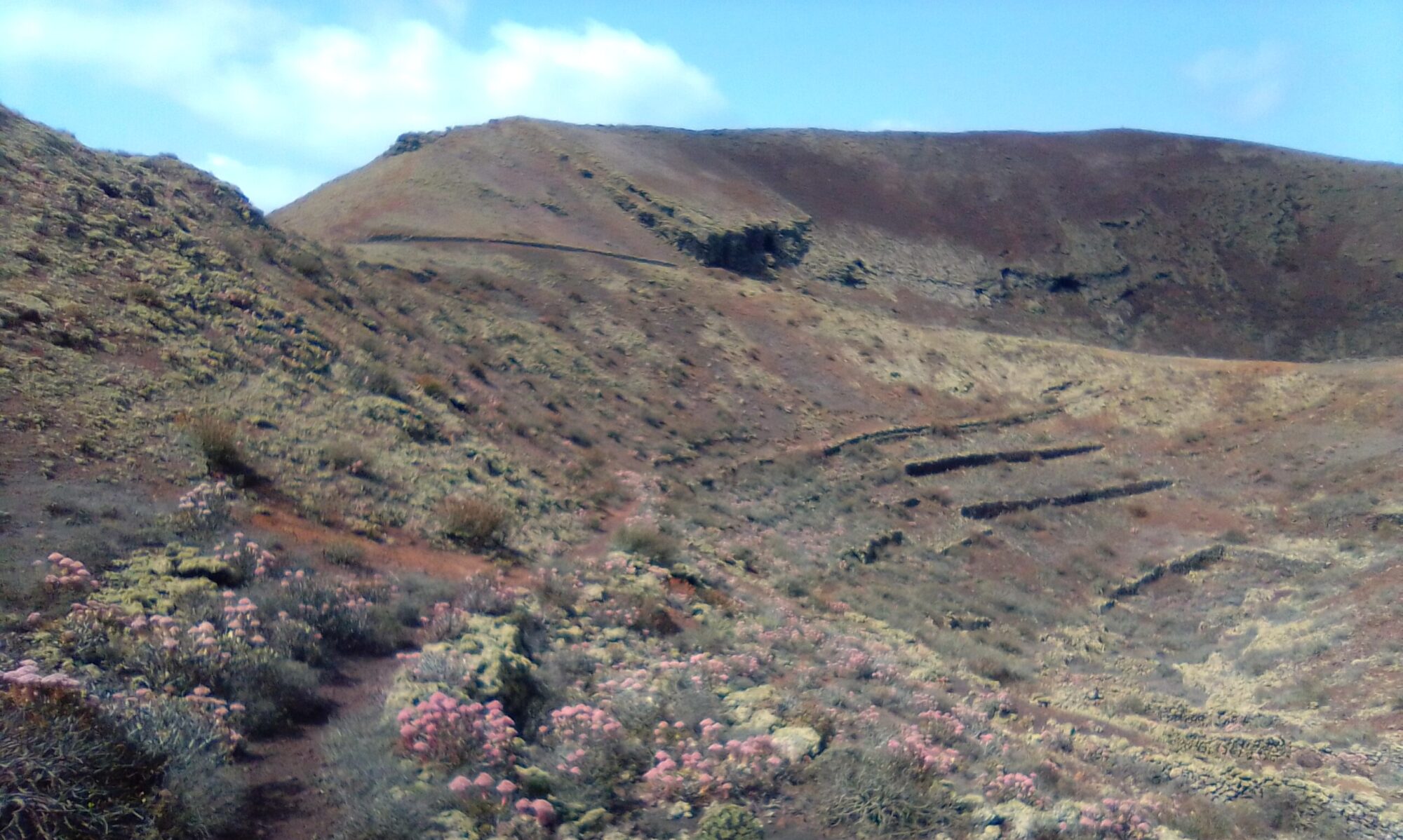The cochineal beetle, a small and humble little insect. Small but perfectly formed, it has given us one of the most sort after natural red dyes in the world. During the 19th and 20th centuries the cochineal beetle provided a booming business for The Canary Islands.
The commercial farming of cochineal has all but ended. Its legacy however, can still be seen in and around Mala and Guatiza. Here, plantations of Prickly Pear Cacti (Opuntia Ficus-Indica) are still an impressive sight.

The cacti were first introduced to the Canary Islands from Mexico. Farming of the cochineal beetle started in earnest in the 1830’s. To protect the cacti from wind damage, they are planted in walled fields known as “cercados”. Picon is added to act as a mulch. This traps much needed moisture and prevents weeds.

The cochineal cycle is about 3 months. The male fertilises the female then she produces nymphs. The nymphs secrete a waxy white substance over their bodies for protection from water loss and excessive sun. After 90 days of munching it is the adult beetles that are harvested, dried and used for the precious dye.
The dye is used for colouring fabric, lipstick, nail varnish and as a food colouring for sausages and even the famous drink Campari. It takes about 140,000 cochineal to produce 1 tonne of dye!!
Cochineal Beetle – Predators
It is not only man that is interested in Cochineal. As cute as they are, ladybugs belong to a group of insects that feed primarily on sap-sucking insects like the cochineal aphid and its relatives. They’re so effective at it, organic farmers pay insect farmers to cultivate ladybugs en masse for them to release into their fields. Not that you would catch the cactus farmers of Lanzarote doing that!
THE CACTUS GARDENS
The Cactus Garden in Guatiza is planted in an old quarry. A final gift from Cesar Manrique opened in 1991.
The terraces now boast more than 450 different species of cactus. The crowning glory, it’s windmill, is now used for teaching purposes.







Lanzarote History
To discover more on the history of Lanzarote, there are a couple of external sites which have proved useful during my wanderings.
Some of the sites are in Spanish only, but most browsers offer a good translate option. I have also made an attempt to summarise a few topics of interest in the History section.

